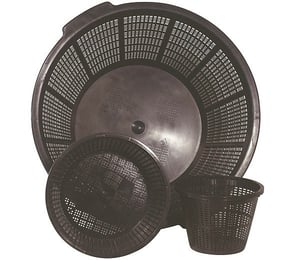There are diseases specific to particular plants and varieties but here’s a selection of the more common complaints that affect the majority of plants at one time or another. If fungicide should be used I’ve recommended an organic version.
Bacterial or fungal leaf spot
Leaf spot is self explanatory, they merge into areas of dead tissue and will affect many different plants, causing the leaves to die. Rose growers know it as Black Spot. If caught early it is not fatal for the plant, remove the affected leaves, including any that have fallen on the ground, and burn. If appropriate, spray with a fungicide (dispersible sulphur) and hard prune in the autumn, destroying the cuttings.
Blight
A fungal disease causing yellowing leaves and black spots to appear. Blight spreads quickly amongst the foliage, so deal with this problem immediately, destroying the affected leaves and spraying with Bordeaux mixture.
Clubroot
Mostly affecting brassicas, this is a soil fungal infection that distorts and stunts roots, so inhibiting the plant’s growth. It is very difficult to control. There is no cure but preventative measures include improving drainage and adding lime to reduce acidity.
Downy mildew
Plants in a cool and humid environment develop yellow / brown patches on their leaves and a mould on the underside that will turn black. This type of mildew will attack and eventually kill the plant. Remove and burn affected parts and ensure good air circulation. Mulch, hand water and avoid nitrogen rich fertiliser.
Grey mould (botrytis)
Thriving in damp air, this very common fungal condition presents itself as blemishes followed by grey mould on all parts of the plant. Rot may set in and badly infected stems will kill the plant. Destroy any infected parts both on the plant and ground, and then ensure that air circulation around the plant is improved and humidity reduced. Avoid over watering and nitrogen rich fertilizer.
Powdery mildew
Leaves are covered with a grey coating usually on the upper surface, the plant’s vigour will be reduced but it should not prove fatal. It will affect many plants growing in dry soil. Remove and burn affected parts and spray with dispersible sulphur. Avoid overcrowding around the plant. Mulch, hand water and avoid nitrogen rich fertilizer.
Rust
A fungal infection is when leaves and stems develop brightly coloured patches or pustules, causing them to wither and in some cases the plant to die. Again this is a disease that affects a wide range of plants. Remove the affected foliage and destroy,. Allow better air circulation and spray with dispersible sulphur. Rust may be an indication of other problems, so check over the plant.
Silver leaf
Caused by a fungus that blocks water circulation in trees, the branches will eventually split and die. Look out for leaves with a silvery appearance, although be careful that it isn’t, ‘false silver leaf’ caused by cold or drought. If it is Silver Leaf, cut off the branches and destroy.
Sooty mould
This is a fungus and the name derives from its colour. It builds upon the secretions left by aphids. It may restrict growth but is not serious. If you control the aphids the sooty mould will disappear.















